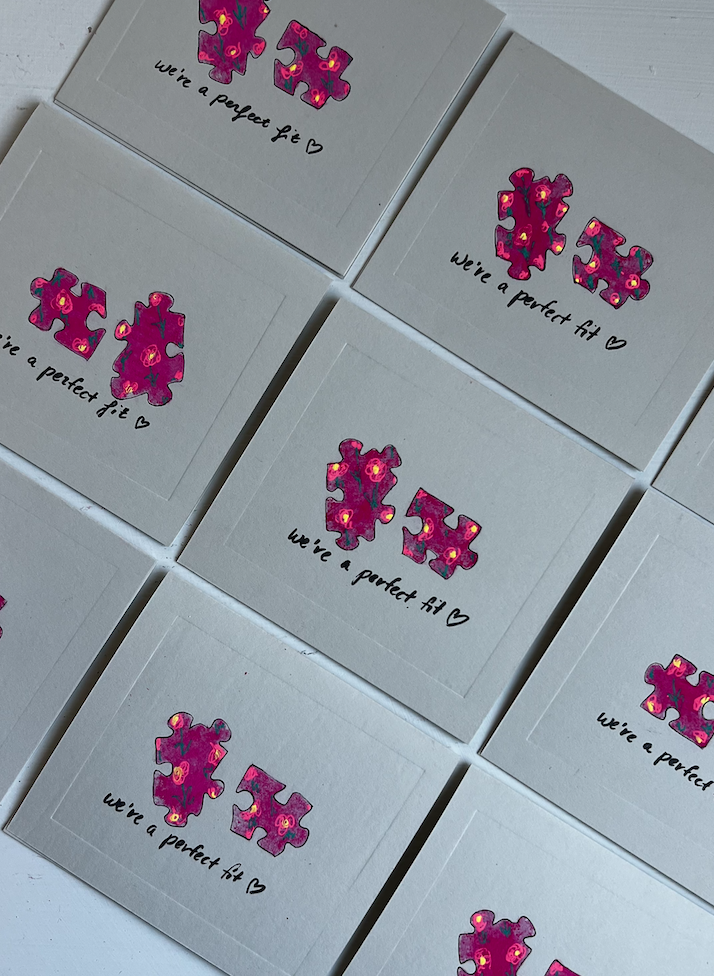Valentine's Day Collograph Printed Card
This project resided in my studio for about a year, and now I am embarking on the experiment of creating a limited edition card for each collection we release.
Embracing love, our inaugural card marks the beginning of the year with our first collection crafted for Valentine's Day. While I'm usually not one for this holiday, reminiscing about receiving valentines from friends during my childhood truly brings back a sense of excitement.
Here are a few artists whose work I found truly captivating during my exploration of collographs:
Belkis Ayon Manso - a Cuban printmaker who created large, highly detailed allegorical collagraphs based on Abakuá, a secret, all-male Afro-Cuban society. Her work is often in black and white, consisting of ghost-white figures with oblong heads and empty, almond-shaped eyes, set against dark, patterned backgrounds. - Wikipedia
Eunice Kim - A Korean-born artist whose work is found at the intersection of rigorous minimalist aesthetic, innovative technique, and singular commitment to sustainable methodologies.
Nadeen Abdelmalek - an Egyptian artist, from Alexandria Egypt. I haven’t found a lot of information about her work but it is so interesting to look at.
Glen Alps - Developed and Coined the term Collograph
I found This to be a great resource for learning more about artists who used/use collograph printing technique and to learn how to create your own.
See the process in action HERE
I've been eager to explore various artistic mediums, and collagraphy has captured my attention as a remarkably accessible and versatile printing process. In this method, anything boasting a low relief texture, such as wallpaper, leaves, fabrics, tapes, and threads, can be incorporated into your base.
What I find most captivating about this type of printmaking is the intaglio aspect, where layers are removed rather than added. For my base, I opted for recycled tetra paks. The layers of paperboard in Tetra Paks provide not only immediacy, a characteristic lacking in other collagraph materials, but also a satisfying tactility during the processes of cutting, scoring, peeling, and printing with this distinctive material.
Some tips:
Move the paper, not the knife for smoother cuts.
Utilize the knife tip to delicately remove layers.
If you don’t have transfer paper, employ a ballpoint pen, positioning it at an angle rather than straight up and down. RSVP pens seem to work really well.
Apply significant pressure when printing; consider using a slab roller or a pasta maker. To prevent the slab roller texture, insert a thick cushion like felt between the print and the roller.



